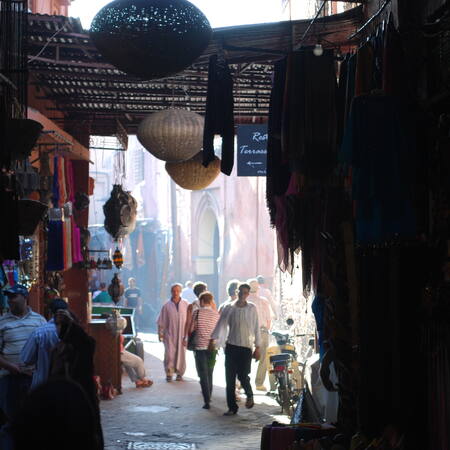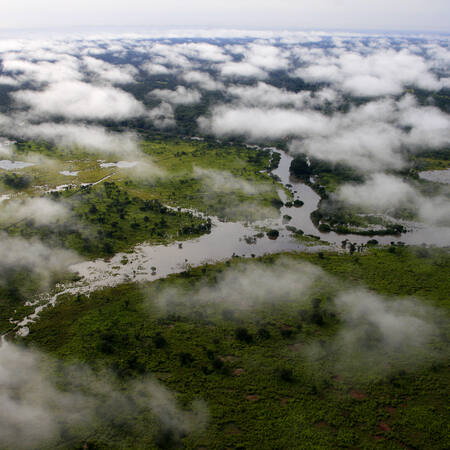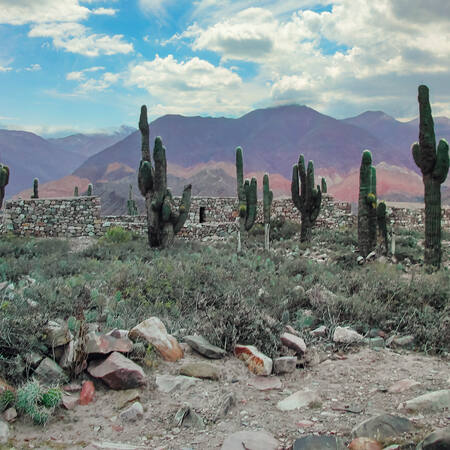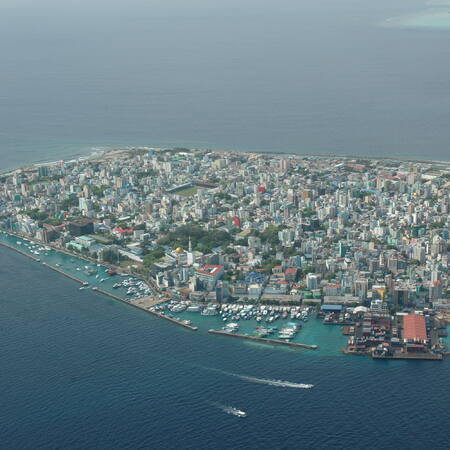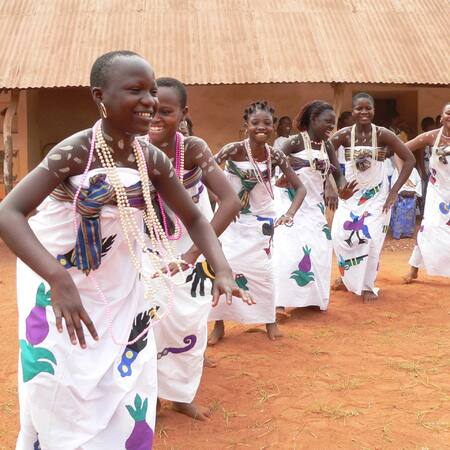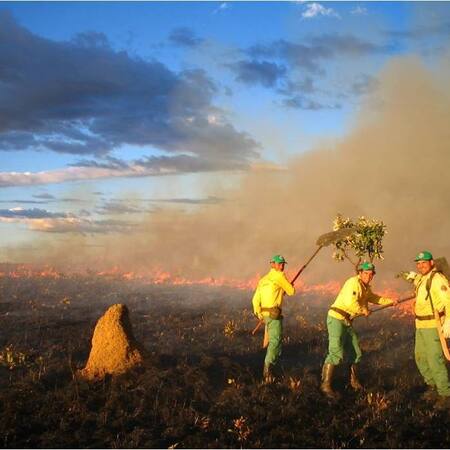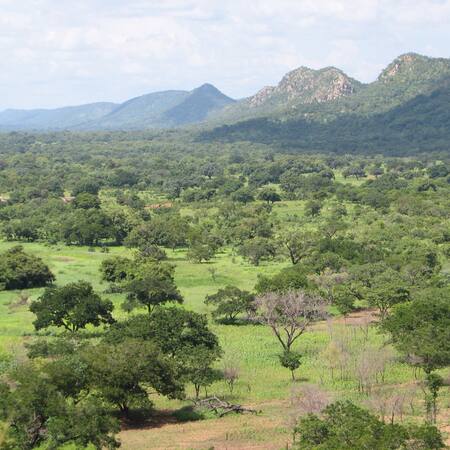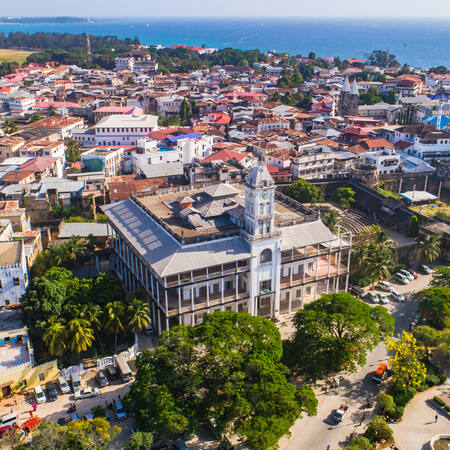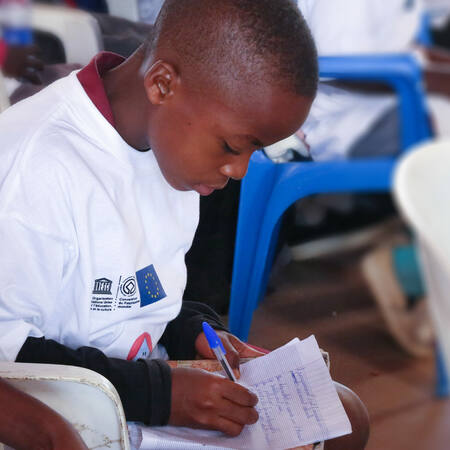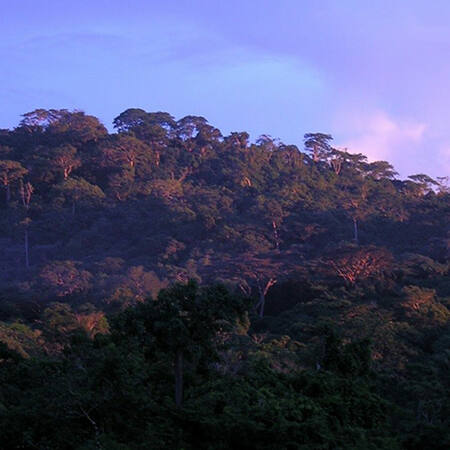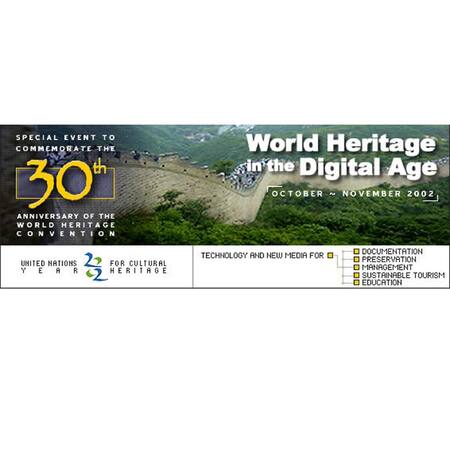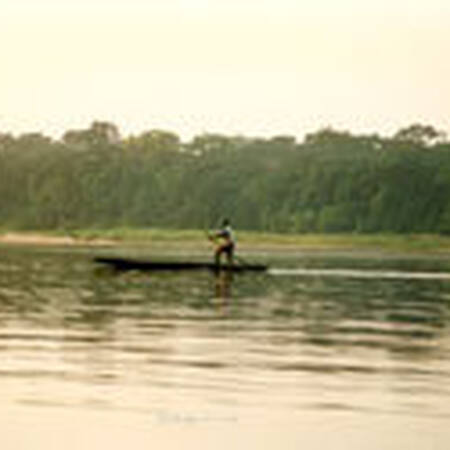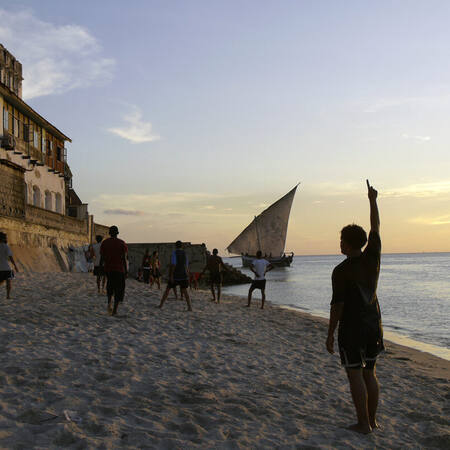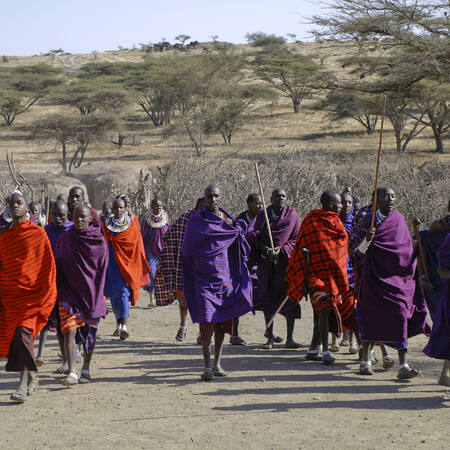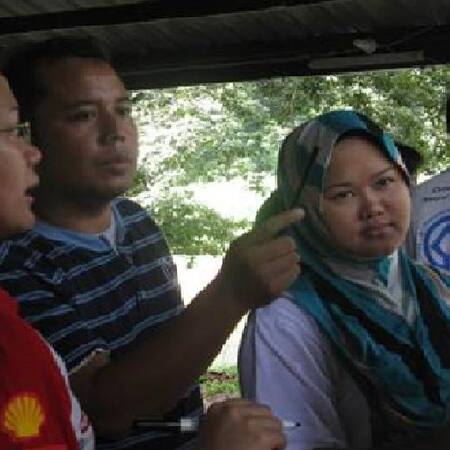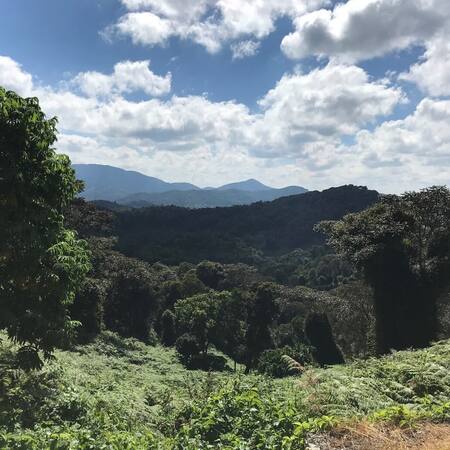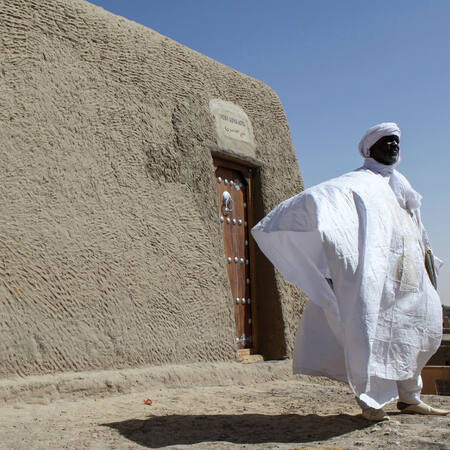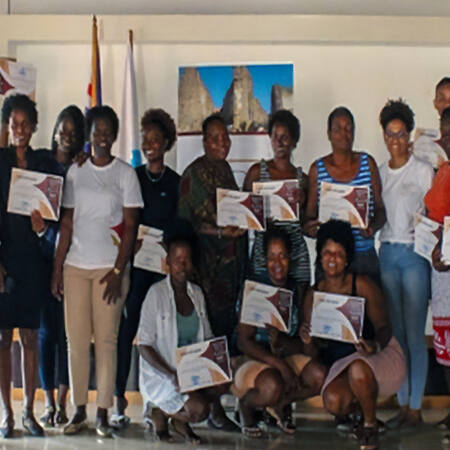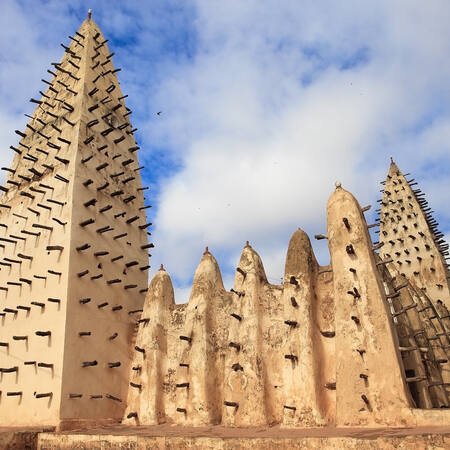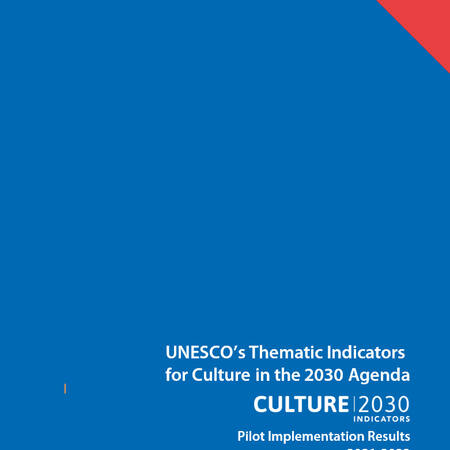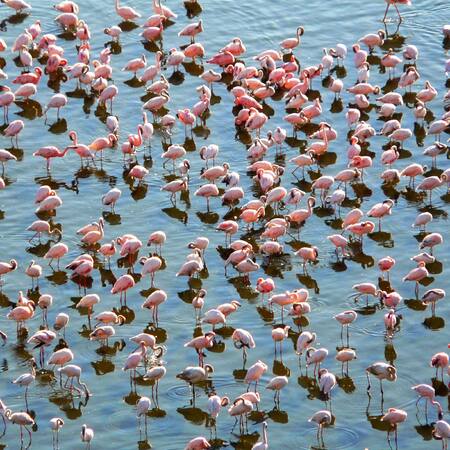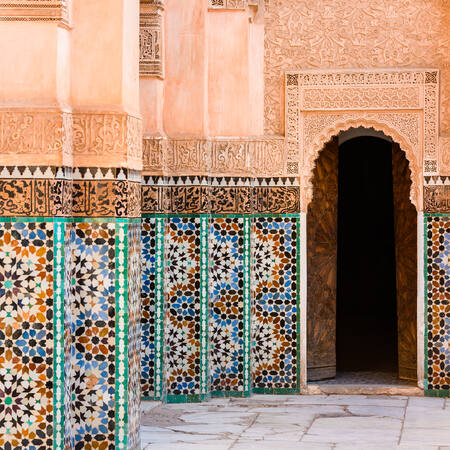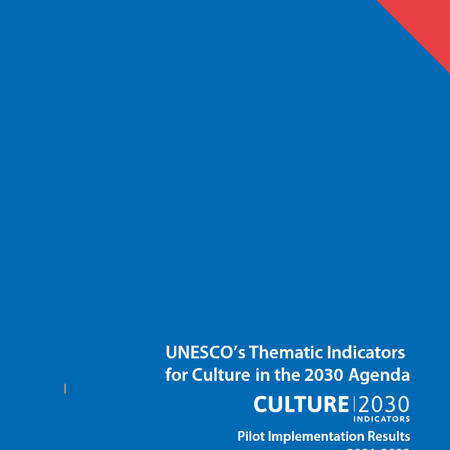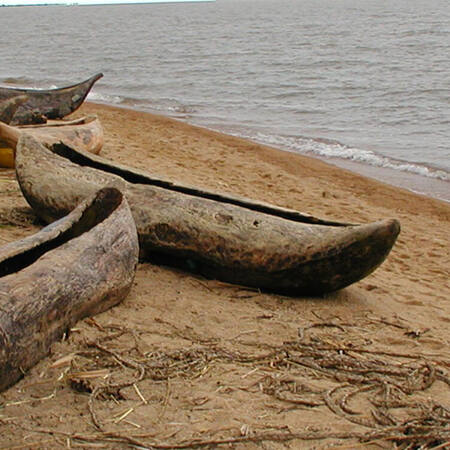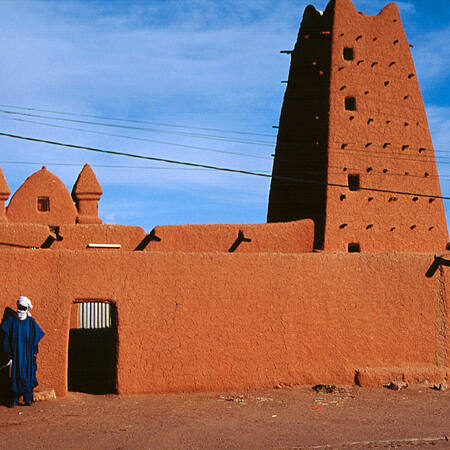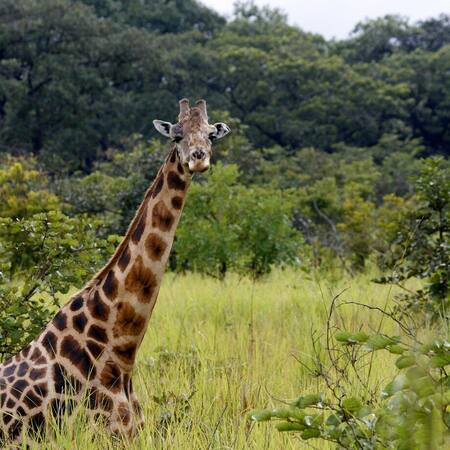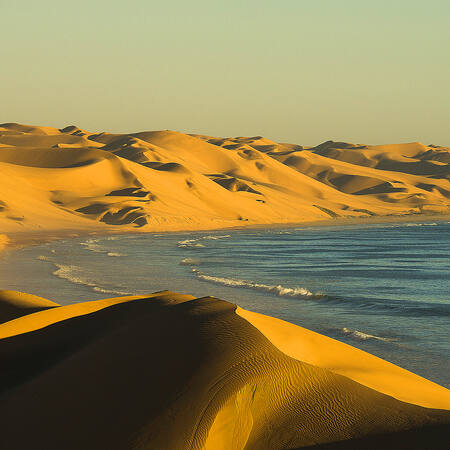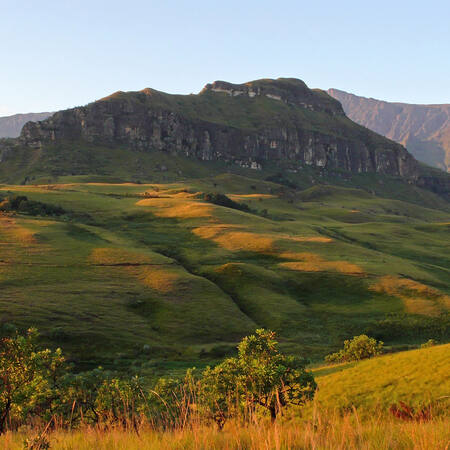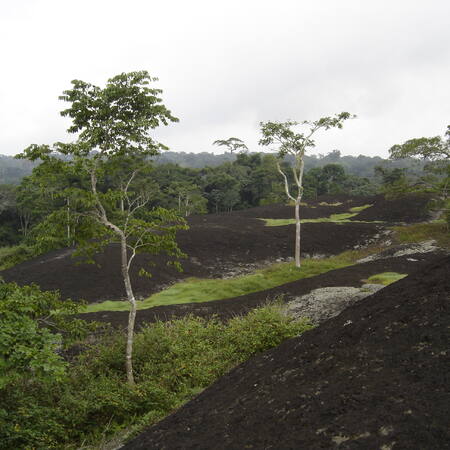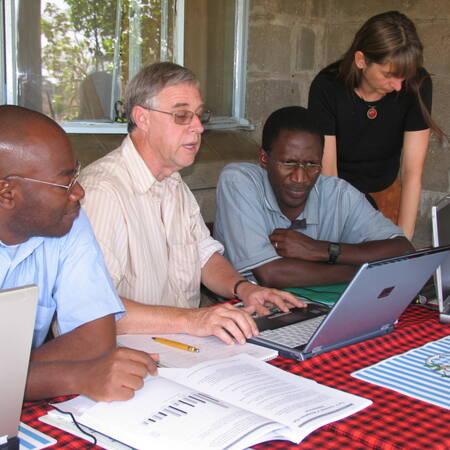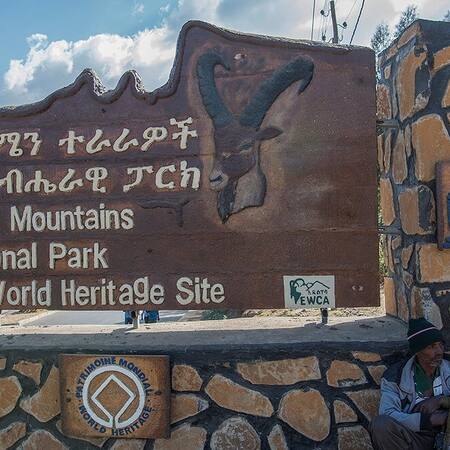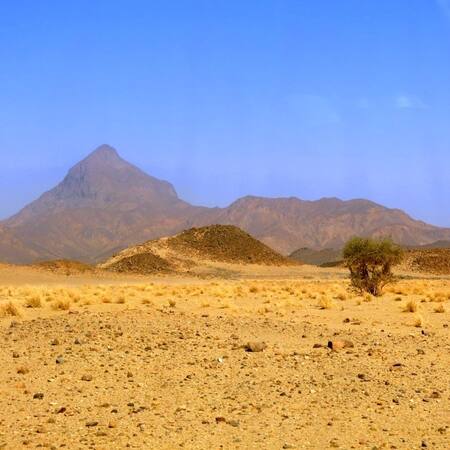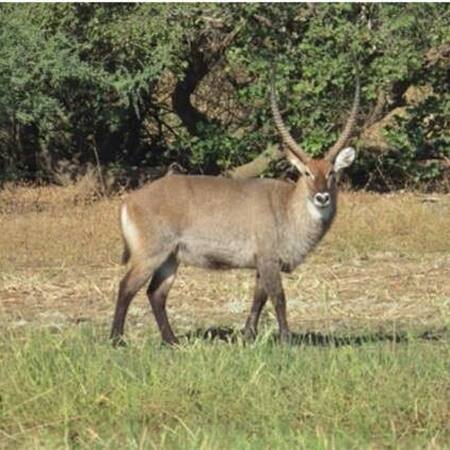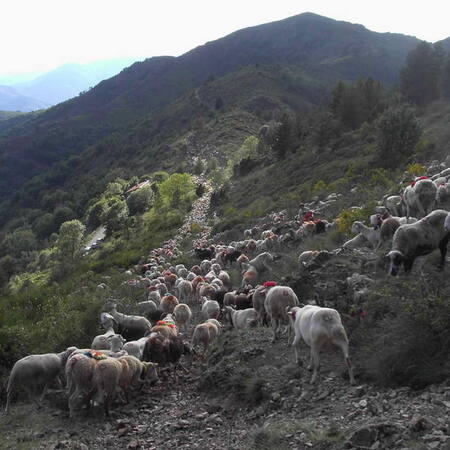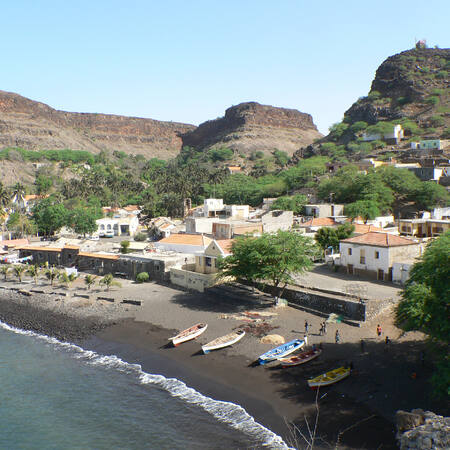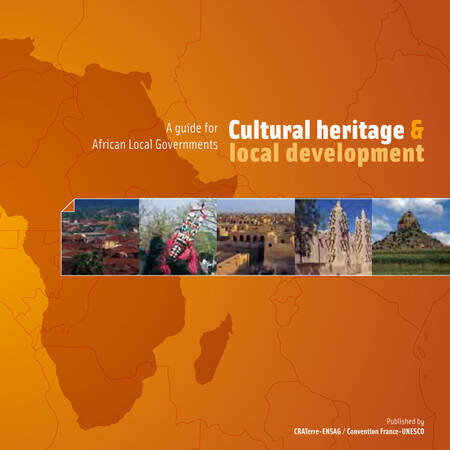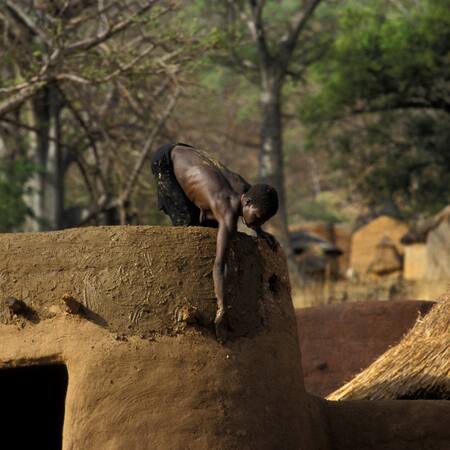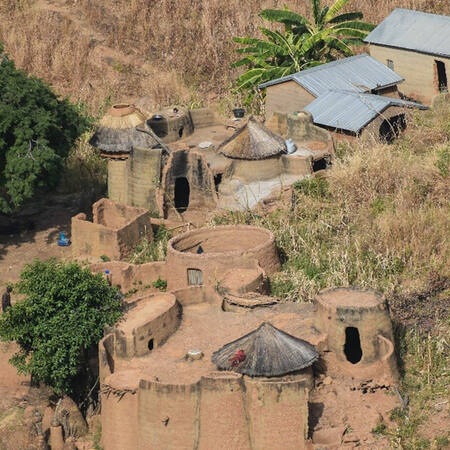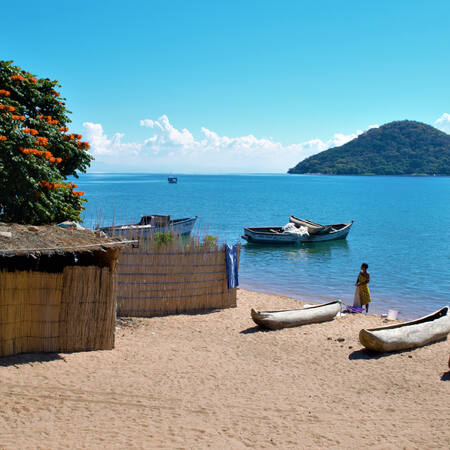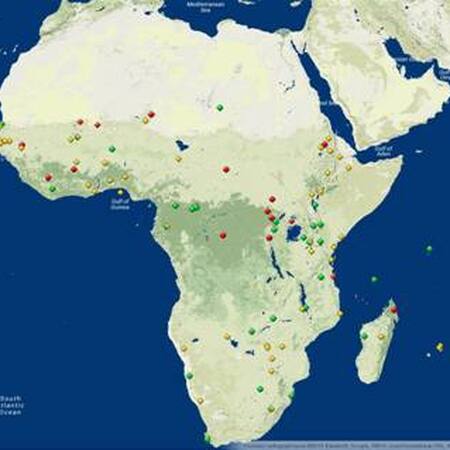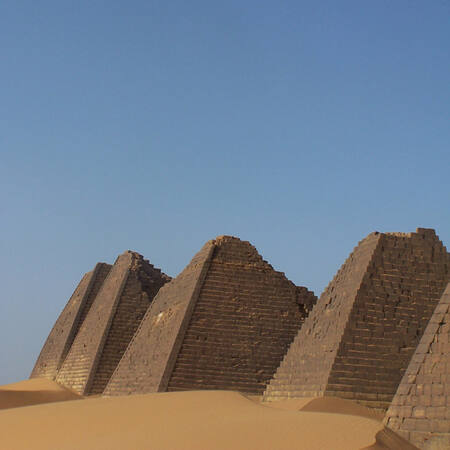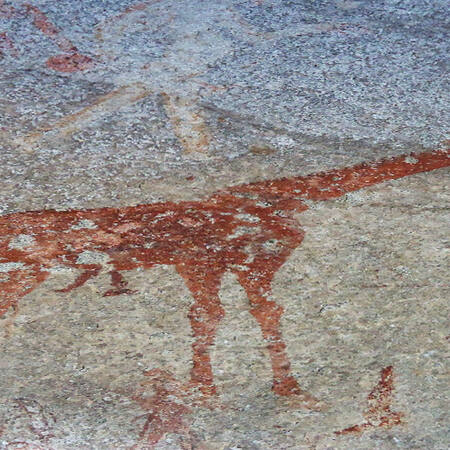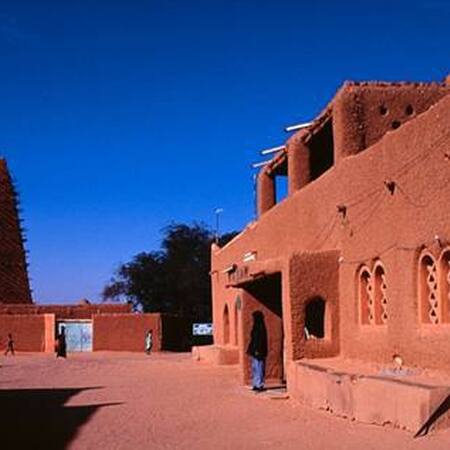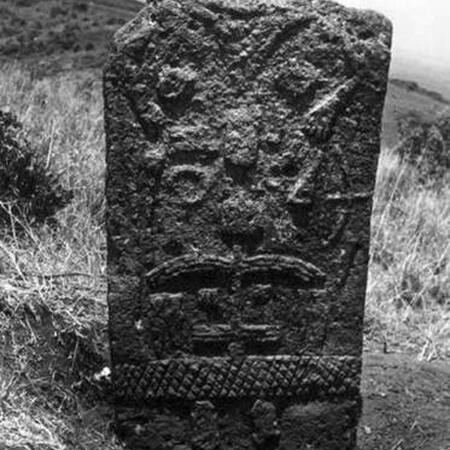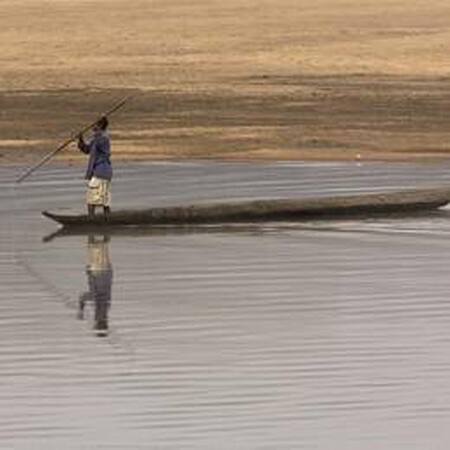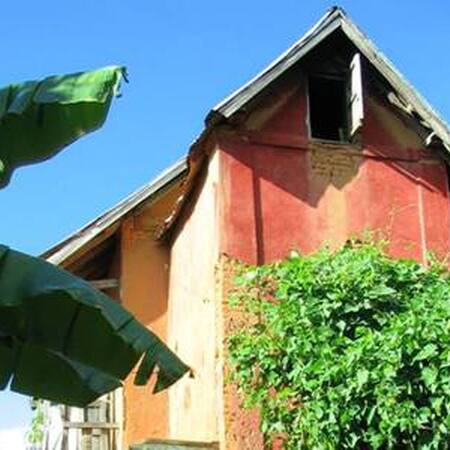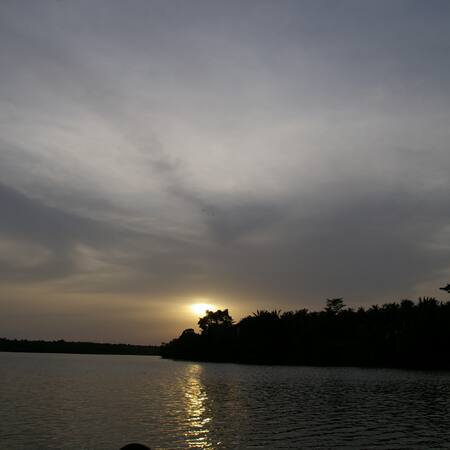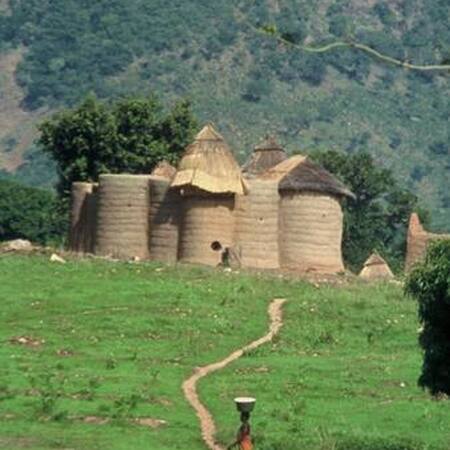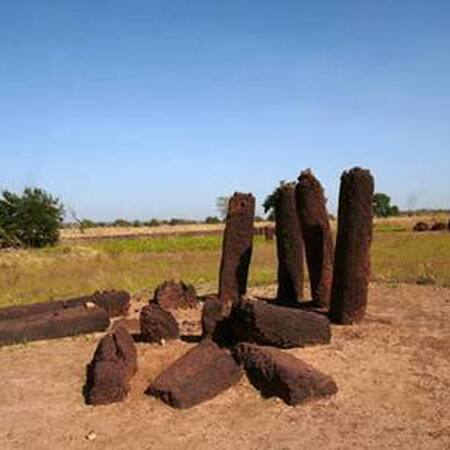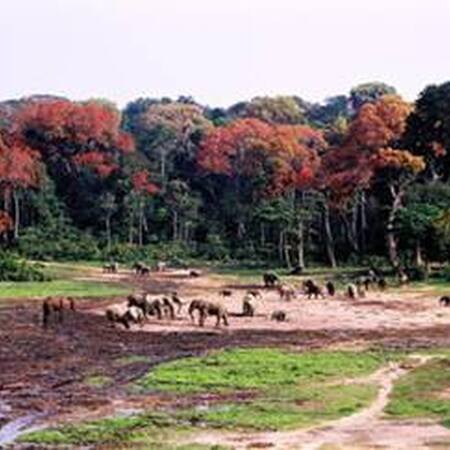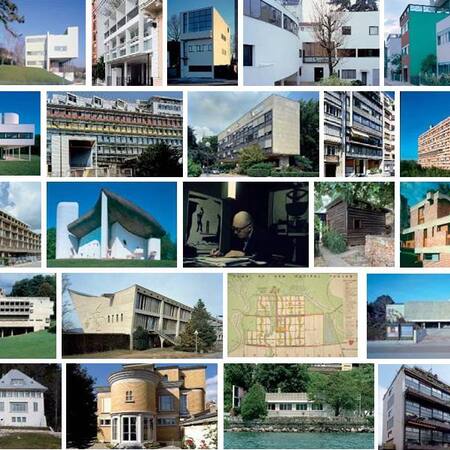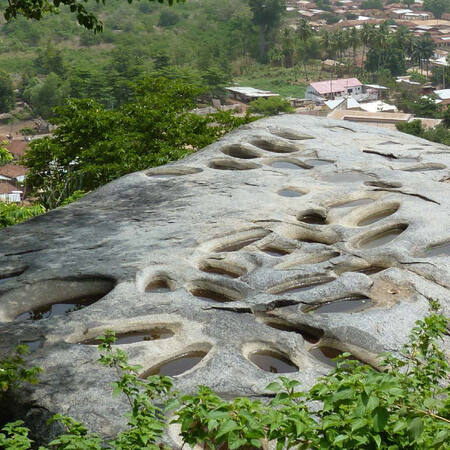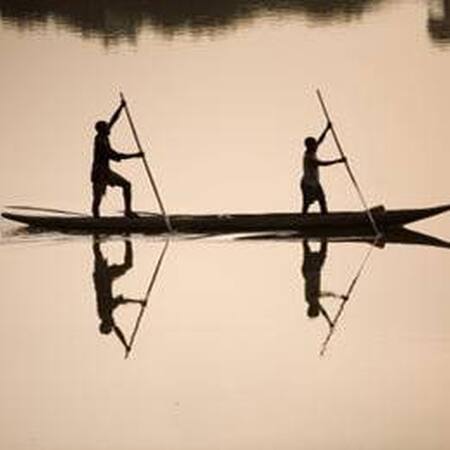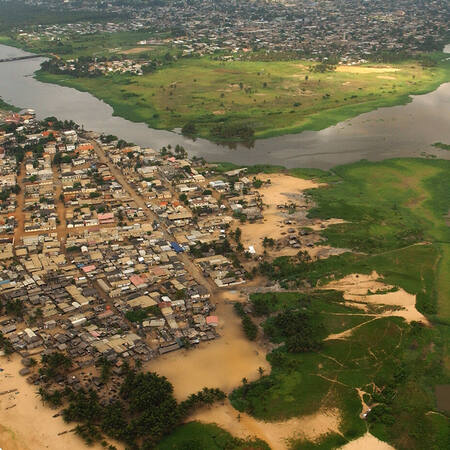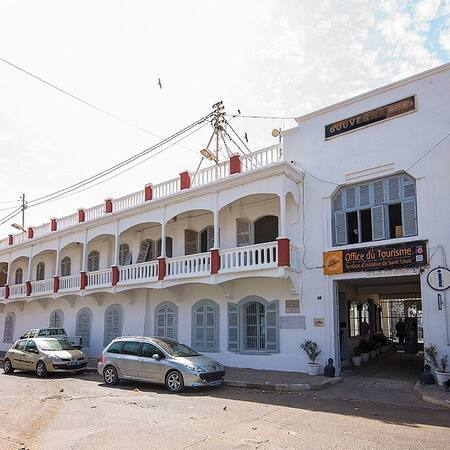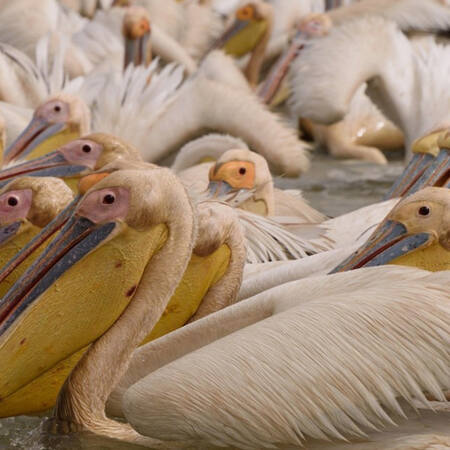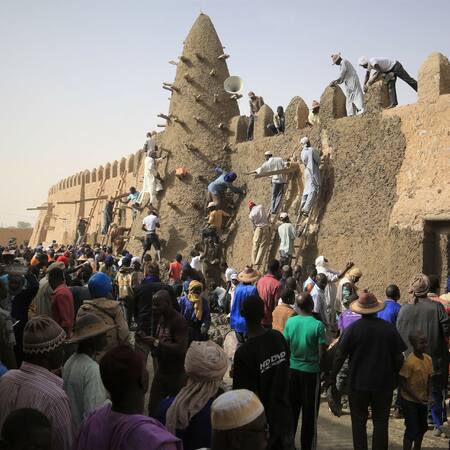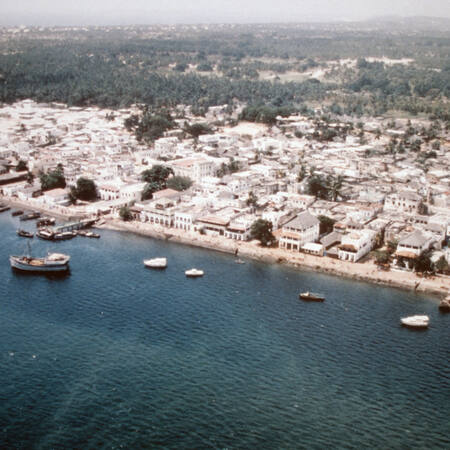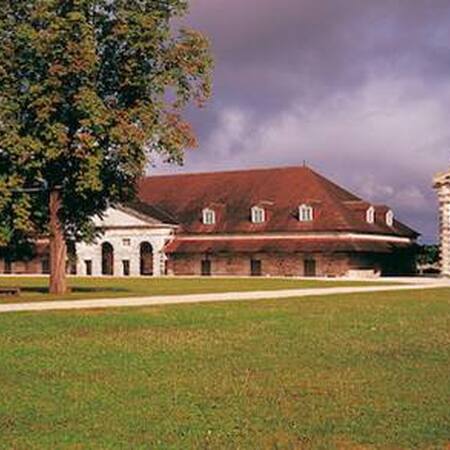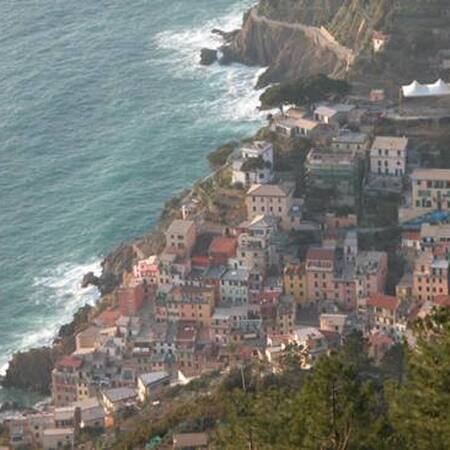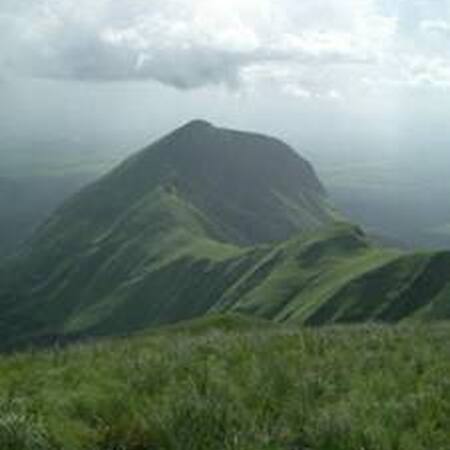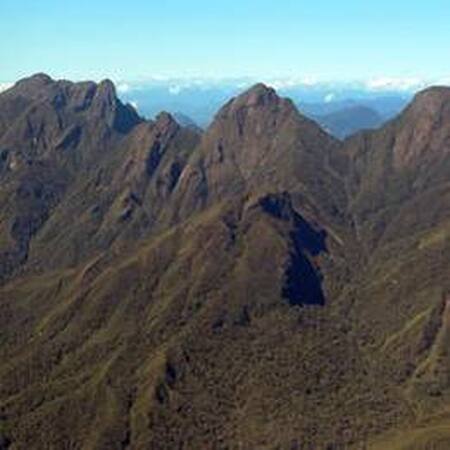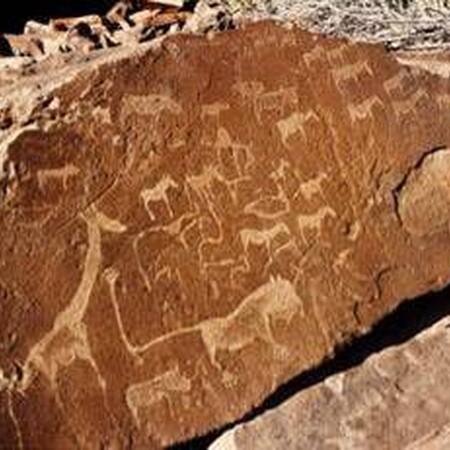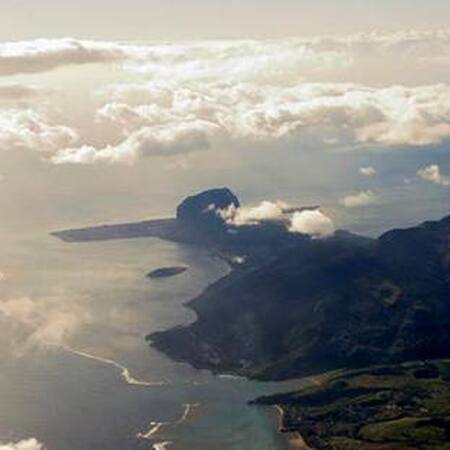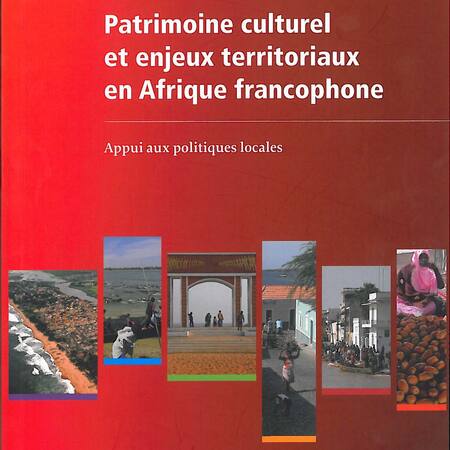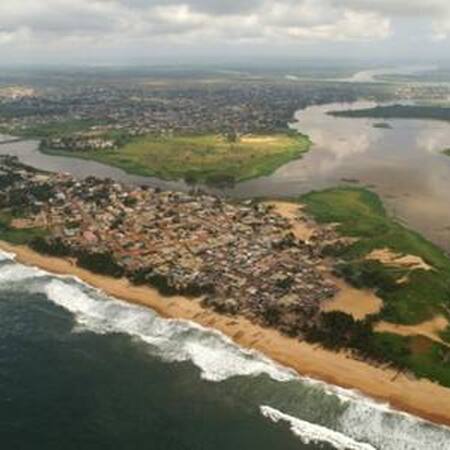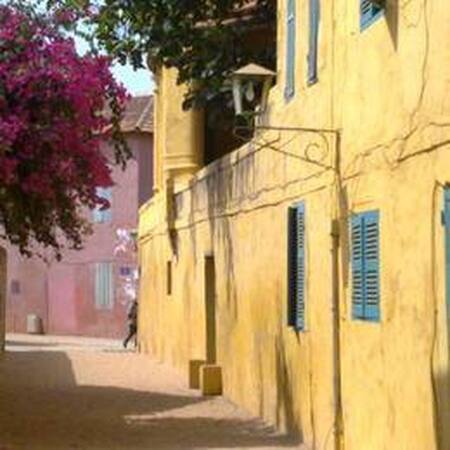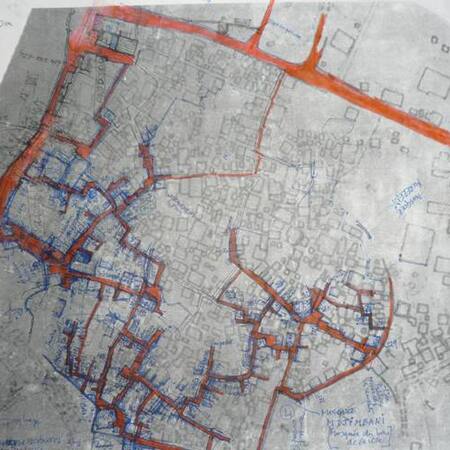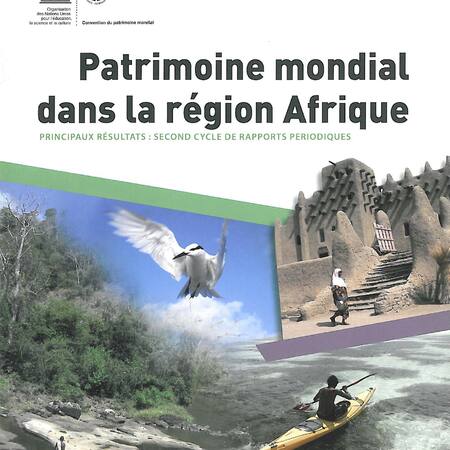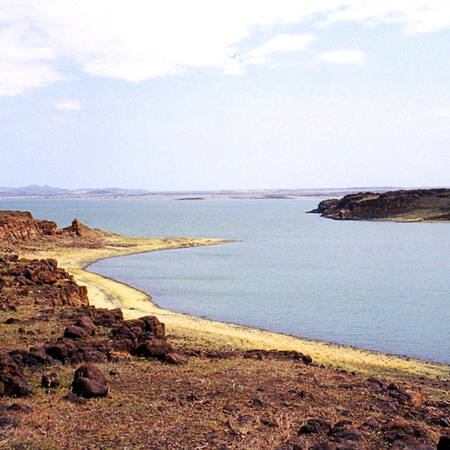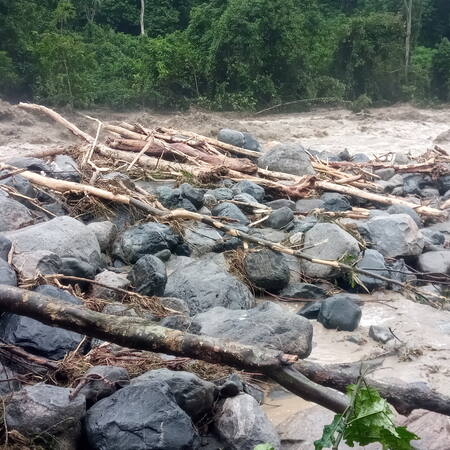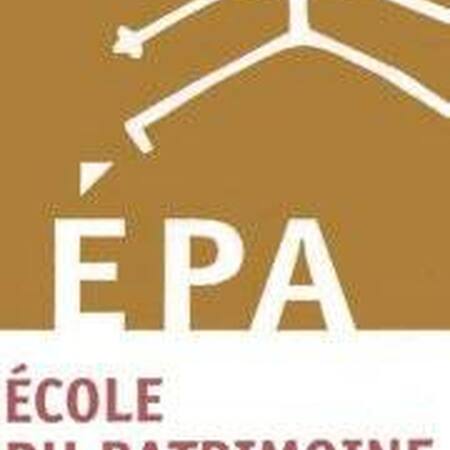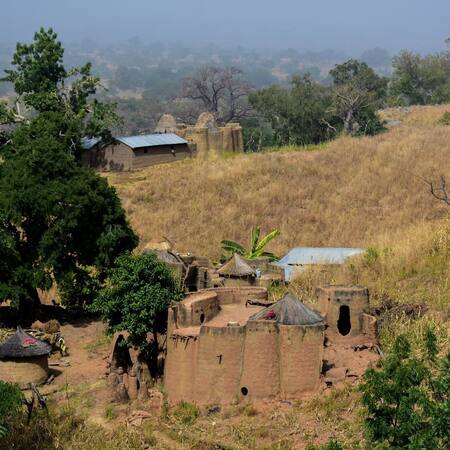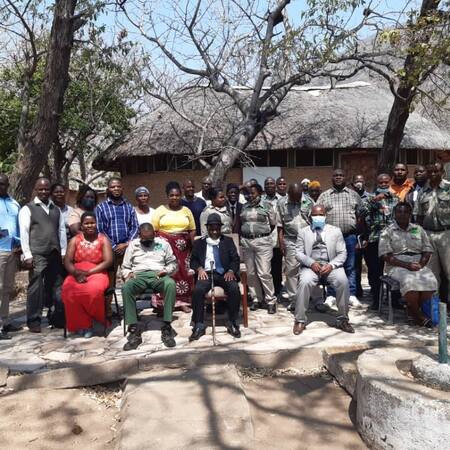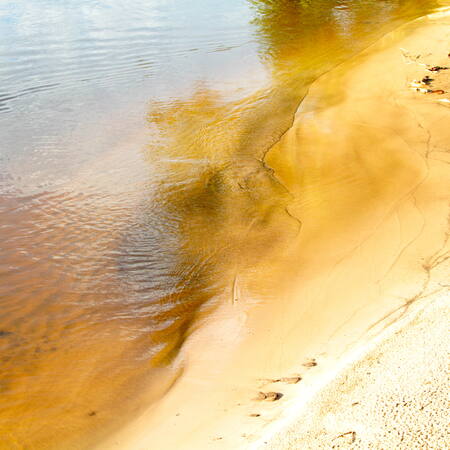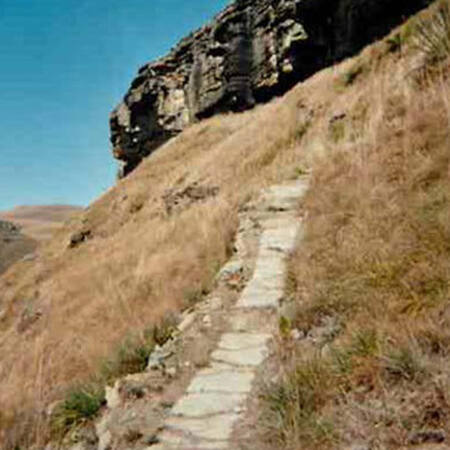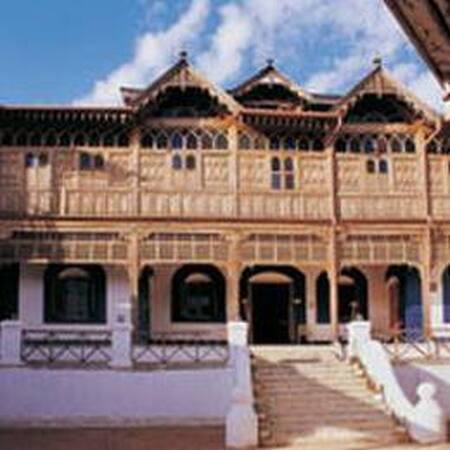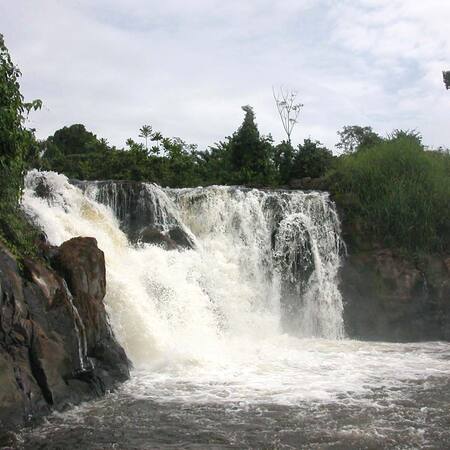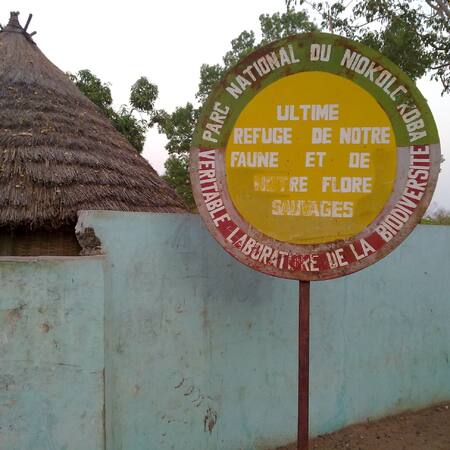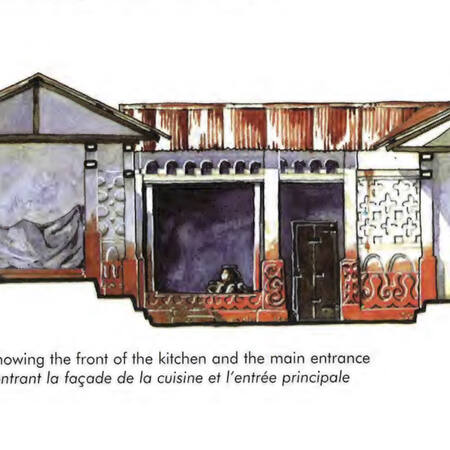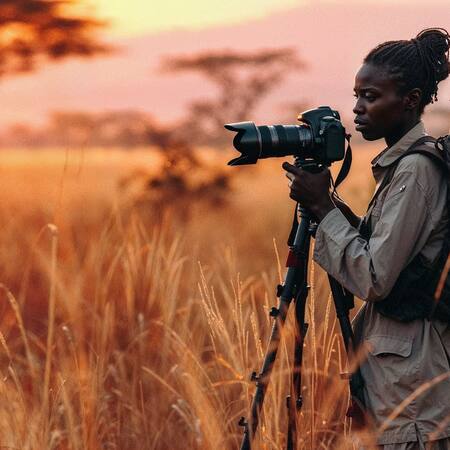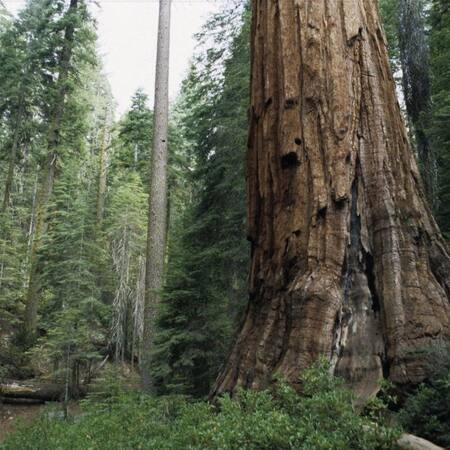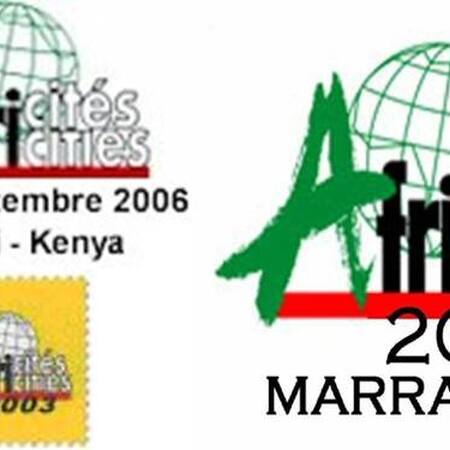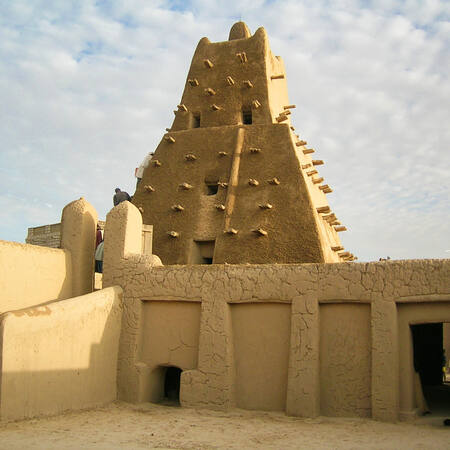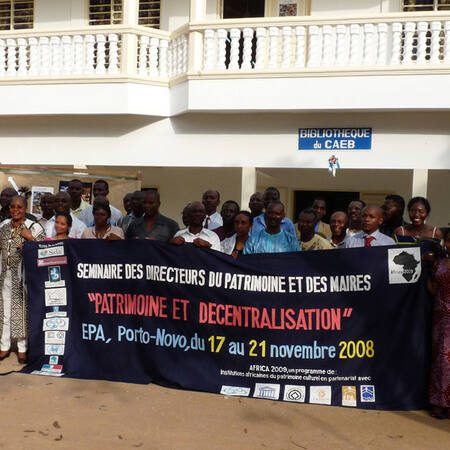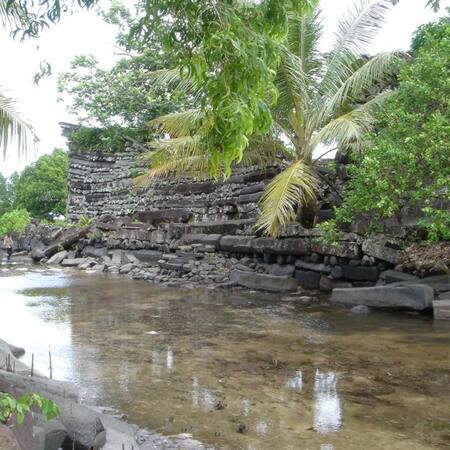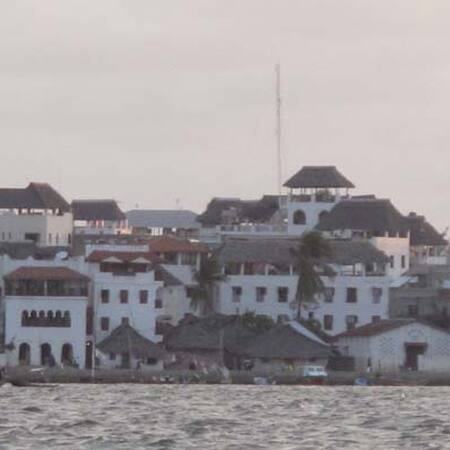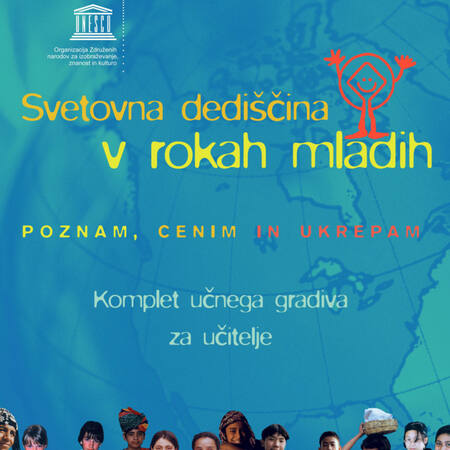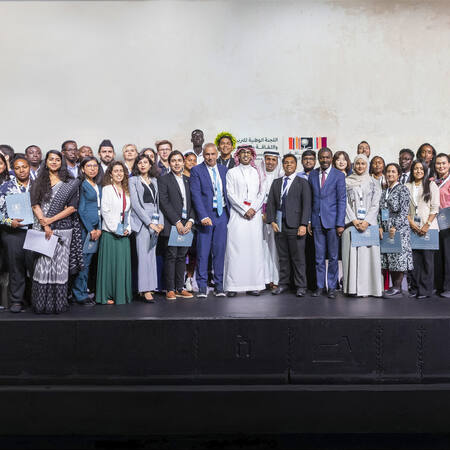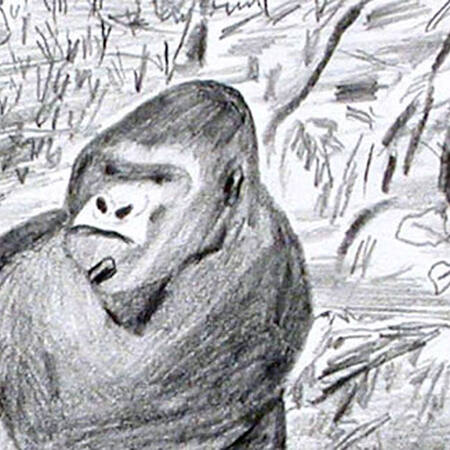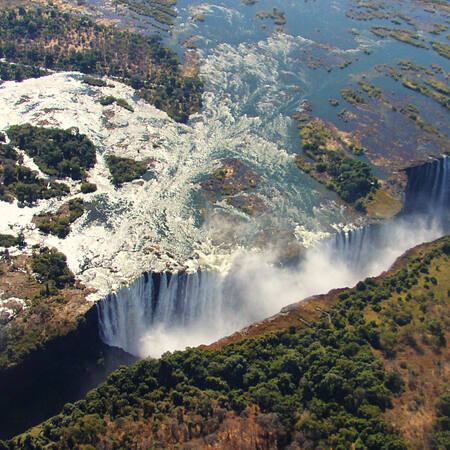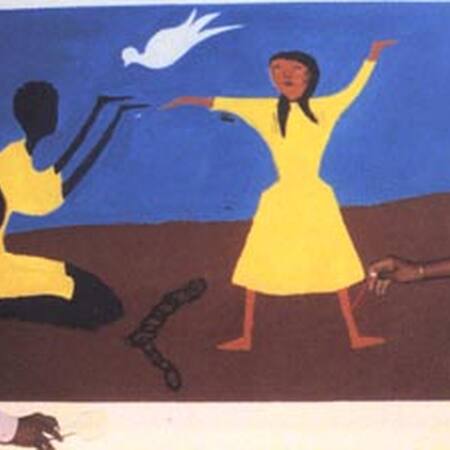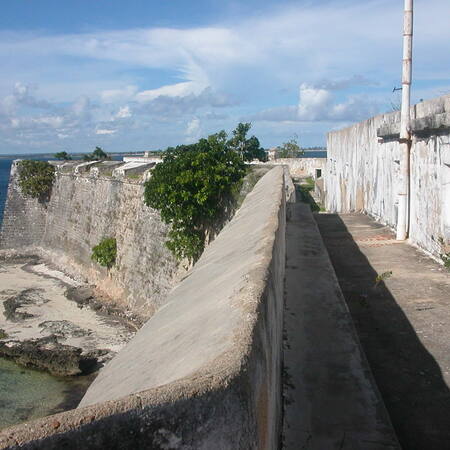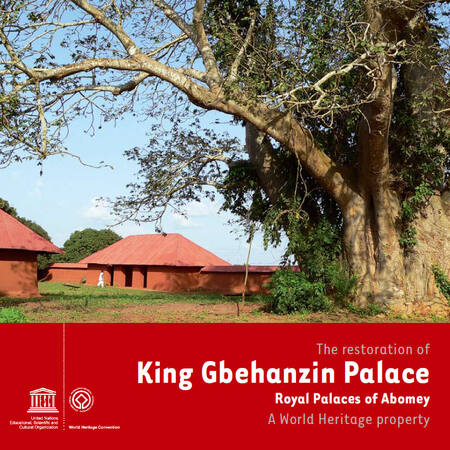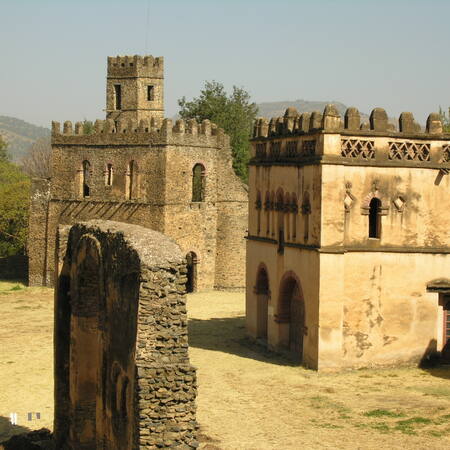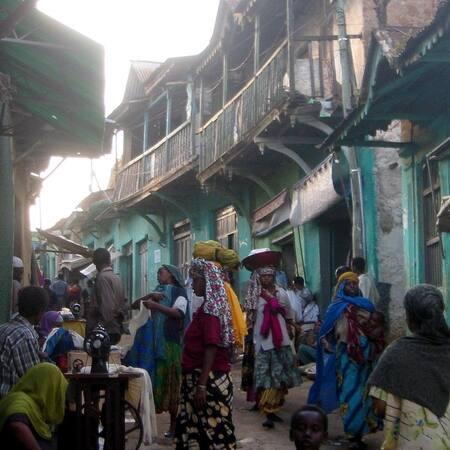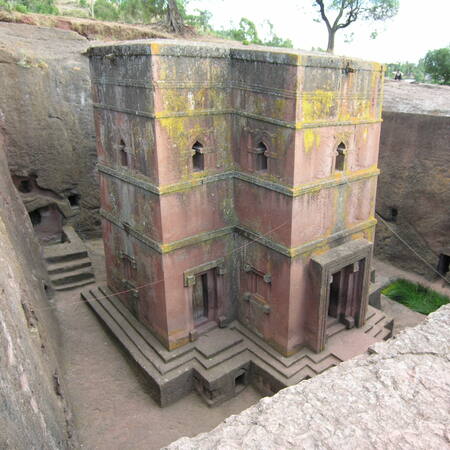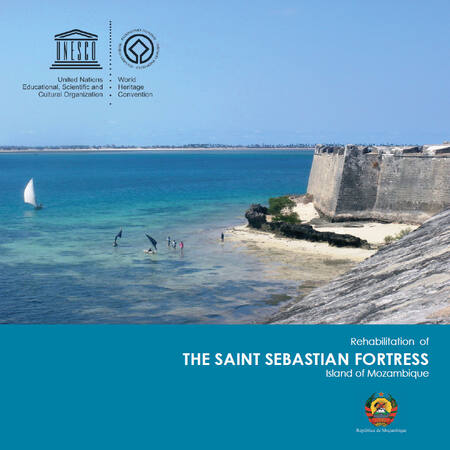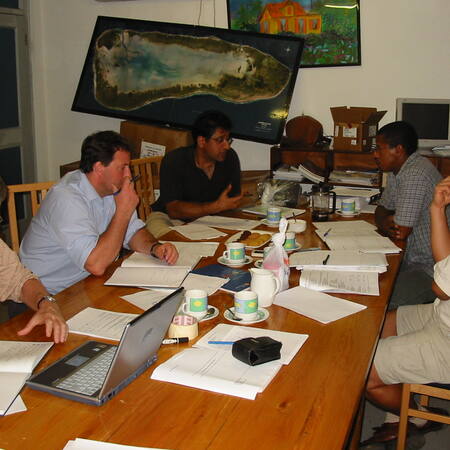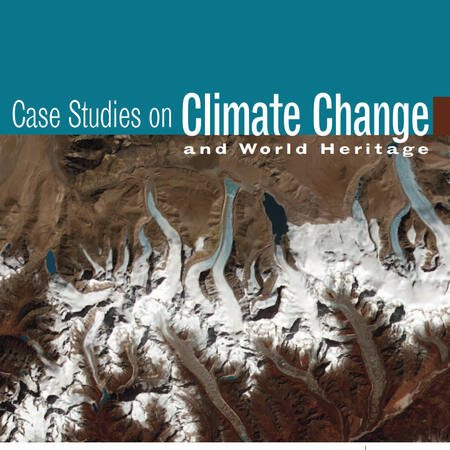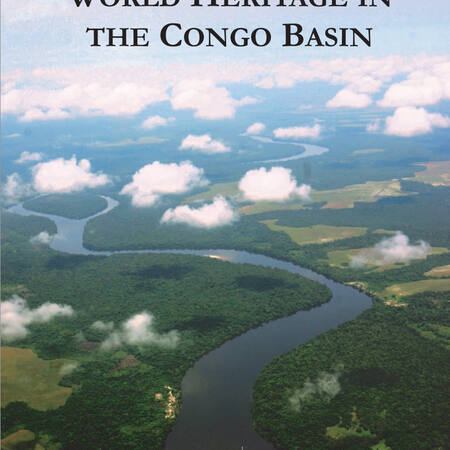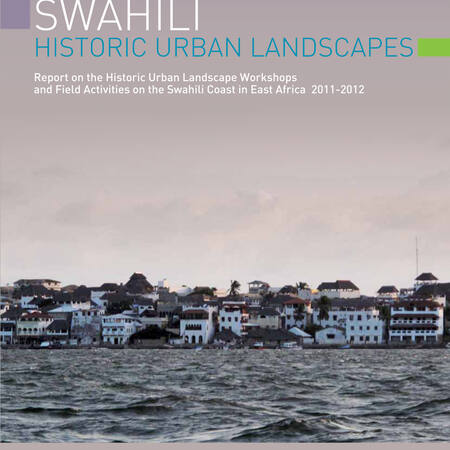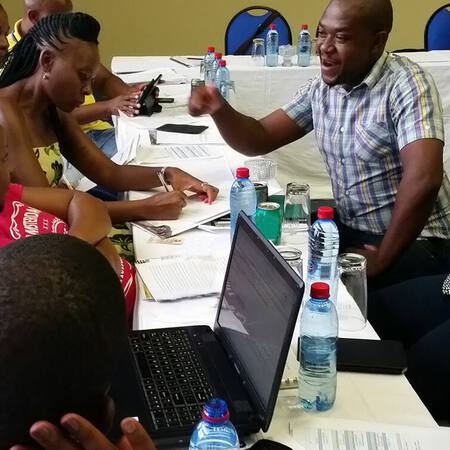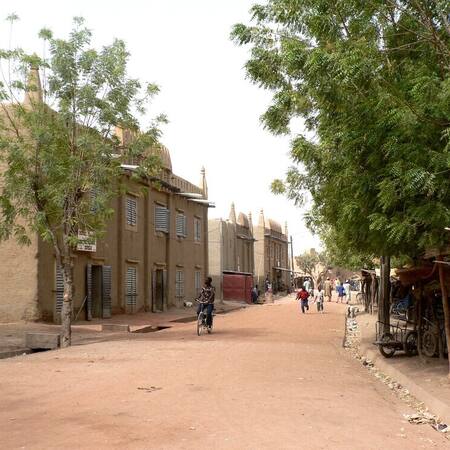World Heritage Cities Programme
The World Heritage Cities Programme is one of six thematic programmes formally approved and monitored by the World Heritage Committee. The programme concerns the development of a theoretical framework for urban ...
Featured
World Heritage Marine Programme
50 flagship marine protected areas of Outstanding Universal Value: Beacons of Hope In a Changing Ocean
Featured
World Heritage Online Map Platform
Funded by the Flanders UNESCO Trustfund (FUT), an online geographic information system for World Heritage is being developed.
Featured
Central Africa World Heritage Forest Initiative (CAWHFI)
Covering an area estimated at 1.62 million km2, the forests of Central Africa are home to vital biodiversity for the planet and play a central role in climate regulation and carbon sequestration.
Featured
There exist a great variety of Landscapes that are representative of the different regions of the world. Combined works of nature and humankind, they express a long and intimate relationship between peoples and ...
Featured
Post-Conflict and Post-Disaster Reconstruction and Recovery
Post-conflict and post-disaster reconstruction became an increasingly important issue after the destruction of cultural heritage sites in countries such as Afghanistan, Iraq, Libya, Mali, Nepal, Syria, and Yemen. ...
Featured
World Heritage Programme for Small Island Developing States (SIDS)
Small Island Developing States (SIDS) are islands of the Caribbean Sea and the Atlantic, Indian and Pacific Oceans. They are some of the most beautiful places on Earth, with atolls of white sand beaches, mountain ...
Featured
At the 43rd session in Baku (2019), the World Heritage Committee requested the State Parties “to continue reflecting on the mechanisms and tools needed to assess and guide interventions in and around urban ...
Rapid Response Facility (RRF) © Oreades The Rapid Response Facility (RRF) is a fund that provides grants to protected areas in the event of a sudden crisis. We mainly finance initiatives aimed at ...
Over the past few years, the security situation at the W-Arly-Pendjari Complex has become a major concern as several armed groups have been operating in the region, causing the evacuation of management staff in some ...
Although the overall urban fabric and townscape give Stone Town its unique character, many individual buildings of historical and architectural significance represent local architecture and building traditions. ...
Founded in the 11th and 12th centuries to serve the caravans crossing the Sahara, these trading and religious centres became focal points of Islamic culture. They have managed to preserve an urban fabric that ...
Natural World Heritage in the Congo Basin
UNESCO has been taking action in the Congo Basin since 2000 in order to improve the conservation and the management of natural World Heritage sites, those already inscribed as well as those which have the potential ...
CAWHFI component funded by the European Commission (2016-2020)
CAWHFI component financed by the European Commission (2016-2020) Between 2016 and 2020, funding from the European Commission enabled CAWHFI to strengthen the monitoring of the TRIDOM and TNS landscapes, an area of ...
Conflict mitigation in Okapi Wildlife Reserve
With 13,720 km², the Okapi Wildlife Reserve has rich biodiversity and a forest ecosystem with cultural and economic importance for the traditional nomadic pygmy hunters Mbuti and Efe who it is believed, have been ...
Securing Manovo-Gounda St. Floris National Park
play_arrow The Manovo-Gounda St Floris National Park (PNMGSF) is the largest park in the Central African savannas. Inscribed on UNESCO World Heritage List in 1988, the park is a unique refuge of biodiversity, ...
The Convention Concerning the Protection of the World Cultural and Natural Heritage was signed on 16 November 1972. The 30th Anniversary celebrations included the organization of the international conference “World ...
Analytical summary of the state of conservation of World Heritage properties (2008)
At its 32nd session (Quebec City, 2008), the World Heritage Committee discussed at length the issues related to the state of conservation of World Heritage properties. With Decision 32 COM 7B.129 (see Annex 1), it ...
Balancing development and conservation in Grand-Bassam (Côte d’Ivoire)
The inscription of the Historic Town of Grand-Bassam on the World Heritage List has provided new opportunities to promote sustainable development in the city. From the creation of a local World Heritage management ...
Biodiversity Conservation in Regions of Armed Conflict: Protecting World Heritage in the Democratic Republic of the Congo Parc national des Virunga © Kim S. Gjerstad A program aimed at preserving ...
The multi-level, heritage-based development and spatial plan aims to link the World Heritage site and buffer zone with the wider city context by using town planning as a tool to bridge spatial and social divides.
Objectives Established in 1959 as a multiple land use area, with wildlife coexisting with semi-nomadic Maasai pastoralists practicing traditional livestock grazing, Ngorongoro Conservation Area (NCA) was inscribed ...
Business Skills for Natural World Heritage Site Managers programme
The Business Skills for Natural World Heritage Site Managers programme is a collaboration between international environmental charity Earthwatch, global energy company Shell and the UNESCO World Heritage Centre. The ...
Thanks to the support of the Government of Japan, the four-year “Capacity-building programme for the nomination of World Heritage sites in the Africa Region”, in line with UNESCO Global Priority Africa, aims at ...
Community conservation: Timbuktu
As of May 2012, the Government of Mali sought help from the international community through UNESCO. Timbuktu and the Tomb of Askia were placed on the List of World Heritage in Danger and UNESCO initiated a series of ...
Cultural entrepreneurship in Cidade Velha, Ribeira Grande (Cabo Verde)
A wide-ranging programme aims to build capacity amongst local residents to understand the potentials offered by cultural heritage, by supporting and enhancing local cultural entrepreneurship. The initiative includes ...
Culture|2030 Indicators Burkina Faso and the city of Ouagadougou Project Page
UNESCO Burkina Faso and the City of Ouagadougou Project Page © Shutterstock Partners Implementation of the UNESCO Culture|2030 Indicators in Burkina Faso and the city of Ouagadougou is with ...
Culture|2030 Indicators City of Ouagadougou Urban Report
City of Ouagadougou Urban Report City results Ouagadougou Alajuela Baguio Bogotá Cluj-Napoca Dubrovnik Elvas Essaouira Hue Leskovac Ouagadougou Skopje Vietnam ---> The Urban ...
Culture|2030 Indicators Kenya and the city of Nakuru Project Page
UNESCO Kenya and the City of Nakuru Project Page © IUCN Partners Implementation of the UNESCO Culture|2030 Indicators in Kenya and the city of Nakuru is with the support and partnership of ...
Culture|2030 Indicators Morocco and the city of Essaouira Project Page
UNESCO Morocco and the City of Essaouira Project Page Partners Implementation of the UNESCO Culture|2030 Indicators in Morocco and the city of Essaouira is with the support and ...
Culture|2030 Indicators National Report of Burkina Faso
National Report of Burkina Faso Country results Burkina Faso Burkina Faso Columbia Costa Rica Croatia Morocco North Macedonia Philippines Portugal Romania Serbia Viet Nam Vietnam ---> The ...
Developing Sustainable Fisheries in Lake Malawi National Park (Malawi)
Lake Malawi National Park was established in 1980 as a National Park and inscribed as a World Heritage Site in 1984 for its natural beauty (criterion vii) and outstanding biodiversity values, notably due to its ...
Over the last decade, several countries from the Sahel region have experienced insecurity and conflicts generated by rebel groups. This has affected the lives of the communities, worsening the region’s economic ...
Durban Meeting (South Africa) on transboundary properties in Africa
In Africa, natural heritage is often protected and sustained because it belongs to a shared system of belief and culture. Furthermore, many cultural and natural properties are transnational, and are either they are ...
Ecological Monitoring in Garamba National Park
Over the last decades, Garamba National Park has been a major target of militant ivory and bushmeat poachers, which threatens the site drastically. Therefore, an effective law enforcement strategy and ecological ...
Ecological restoration of the Air and Ténéré Natural Reserves
In 1992, one year after its inscription, the Air and Ténéré Natural Reserves were placed on the List of World Heritage in Danger due to the deterioration of the state of conservation of the property, caused by ...
Educating visitors on how to enjoy Namibia’s World Heritage Wonders Responsibly
Educating visitors to enjoy Namibia’s World Heritage responsibly © Putting tourism on a more sustainable path has been a core priority of the Government of Namibia as visitors return to the ...
Emergency assistance to the Okapi Wildlife Reserve of the Democratic Republic of the Congo
The Okapi Wildlife Reserve has been on the World Heritage List since 1996. It occupies about one-fifth of the Ituri forest in the northeast of the Democratic Republic of the Congo, near the borders of Sudan and ...
Engaging local communities in the conservation of the Maloti-Drakensberg Park World Heritage site
Local communities and indigenous peoples are, and have been for centuries, the custodians of many World Heritage sites. Launched in the year 2000, the Community Management for Protected Areas Conservation (COMPACT) ...
Engaging local communities in the conservation of the Okavango Delta World Heritage site
Local communities and indigenous peoples are, and have been for centuries, the custodians of many World Heritage sites. Launched in the year 2000, the Community Management for Protected Areas Conservation (COMPACT) ...
The current state and trend of World Heritage values of the Dja Faunal Reserve are threatened by pressures from development projects (dams, plantations, logging) in the periphery of the Reserve. There is concern ...
Enhancing our Heritage- Monitoring and managing for success in World Natural Heritage sites
Enhancing Our Heritage - Monitoring and Managing for Success in World Natural Heritage Sites was a seven-year UNESCO/IUCN project funded by the United Nations Foundation. The project commenced in 2001 and operated ...
Enhancing the implementation capacity of the 1972 Convention at Natural World Heritage sites
Ethiopia is among the African countries, which have nine sites inscribed on the World Heritage List. Eight cultural sites and only one natural property, the Simien National Park inscribed in 1978. The Ethiopian ...
Evaluation Mission of the Air and Ténéré Natural Reserves
Objectives The Air and Ténéré Natural Reserves were inscribed on the World Heritage List in 1991 and on the List of World Heritage in Danger in 1992, in particular because of the impact of armed conflict. This ...
Finalisation of the Zakouma National Park nomination file on the World Heritage List
Zakouma National Park is located in southeastern Chad. Inscribed in the Tentalive List in 2005, it covers an area of nearly three hundred and five thousand (305,000) hectares. Created in 1963, Zakouma National Park ...
Global Strategy: Support to agro-pastoral cultural landscapes
Pastoralism is defined as a system of livestock farming which depends, for the most part, on the generally non-intensive use of naturally-occurring plant materials for grazing, either on a farm or as part of a ...
Guidebook for urban and architectural regulation of Cidade Velha (Cabo Verde)
The Guidebook aims to make the urban legislation of the city of Cidade Velha more accessible and understandable to the public. This document constitutes an exemplary tool for awareness raising of local communities ...
Handbook on Cultural Heritage and Local Development for African Local Governments
The handbook "Cultural heritage and local development: A Guide for African local governments", co-edited by the France-UNESCO Cooperation Agreement and CRATerre-ENSAG in 2006, was designed as a tool for decision ...
Improvement of the conservation of Koutammakou, the Land of the Batammariba - Phase 2
Following the collapse of several Sikien during the rain season in 2018, an on-site emergency mission was carried out by UNESCO from 19-24 October 2018 to assess the extent of the damages caused. The mission ...
Improvement of the conservation of Koutammakou, the Land of the Batammariba
Following the collapse of several Takienta during the rainy season in 2018, an on-site emergency mission was carried out by UNESCO from 19-24 October 2018 to assess the extent of the damages caused. The mission ...
Funded by the Government of Japan through the UNESCO/Japanese Funds-in-Trust, implementation from 2022 to 2024. Four World Heritage sites from Asia, Africa, the Arab region and Latin America and the Caribbean work ...
Inventory of Cultural Heritage in Gabon
Gabon currently has two properties inscribed on the World Heritage List, the Ecosystem and Relict Cultural Landscape Lopé - Okanda and the Ivindo National Park, inscribed in 2021 at the 44th enlarged session of the ...
Lake Malawi fish conservation project
Located at the southern end of the great expanse of Lake Malawi, with its deep, clear waters and mountain backdrop, the national park is home to many hundreds of fish species, nearly all endemic. Its importance for ...
Within the framework of the France-UNESCO Cooperation Agreement, the French Ministry of Culture and the Director General of heritage for several African countries organized a week of meetings for directors of the ...
Meroe, Republic of the Sudan – Preparatory Assistance for the nomination of ‘The Island of Meroe’
The sites of Meroe, Naqa and Musawwarat es-Sufra, located in the Nile province of Sudan were the heartland of the Kush Kingdom from the 8th Century B.C to the 4th Century AD. Otherwise known as ‘The Island of Meroe’ ...
Mitigating threats to Rock Art Heritage in Zimbabwe
Zimbabwe has benefited from several initiatives in the field of Rock Art conservation. These initiatives mainly consisted of participation in training programmes with sub-regional scope that took place about a ...
At its 19th session (UNESCO, 2013), the General Assembly of States Parties to the World Heritage Convention decided (Resolution 19 GA 4) to fully apply Article 8, paragraph 2, of the World Heritage Convention which ...
Periodic Reporting 1st Cycle: Africa
Conclusions and recommendations of the synthesis Report on the state of conservation of the World Heritage in Africa, submitted in accordance with the strategic approach approved by the World Heritage Committee at ...
Periodic Reporting 2nd Cycle: Africa (2011)
This report presents the results of the Second Cycle of Periodic Reporting in the Africa region. The exercise involved the 44 States Parties which had ratified the 1972 Convention Concerning the Protection of the ...
Founded in the ninth century, the Agadez, Niger, occupies a prominent position on the crossroads of the principal commercial routes of the Sahara, which allowed it to play an important role in the region until the ...
The France-UNESCO Cooperation Agreement, similar to the technical cooperation provided to the Town of Luang Prabang in the Lao People's Democratic Republic, has provided technical and financial support to national ...
Preparatory assistance for an extension to the site of Tiya, Ethiopia
Ethiopia has numerous megalithic sites. The most important of them is Tiya, which was inscribed on the World Heritage List in 1980. It has thirty-six monuments, including thirty-two stelae inscribed with sometimes ...
Preparatory assistance for inscription of the Rainforests of the Atsinanana, Madagascar
The Rainforests of the Atsinanana are predominantly old-growth forests, and, as such, are critically important for the maintenance of ecological processes and the survival of Madagascar’s unique biodiversity. The ...
Preparatory assistance for inscription of the Royal Domain of Mbé cultural landscape, Congo
Located 200km from Brazzaville, Congo, the Royal Domain of the Mbé was inscribed on the Tentative Lists in 2008. The property, which is also of significant historical value, is made up of a group of areas linked to ...
Preparatory assistance for inscription of the Royal Hill of Ambohimanga
The Royal Hill of Ambohimanga in Madagascar consists of a royal city and burial site, and an ensemble of sacred places. It is associated with strong feelings of national identity, and has maintained its spiritual ...
The Ehotilé Islands National Park is a group of six islands situated along the eastern shoreline of the Côte d’Ivoire that shelters a complex and diverse flora and fauna. It was listed as a Ramsar Site (see the ...
Preparatory assistance for the inscription of Koutammakou, the Land of the Batammariba, Togo
The Koutammakou landscape in north-eastern Togo, which extends into neighboring Benin, is home to the Batammariba people whose remarkable mud tower-houses have become a symbol of Togo. In this landscape, nature is ...
Preparatory assistance for the inscription of Stone Circles of Senegambia
Africa is underrepresented on the World Heritage List, particularly concerning archaeological sites. This is why it is important to assist countries in the preparation of nominations. In a territory approximately ...
The Aka Pygmies are considered the very first inhabitants of the Central African Republic. They live in the Mongoumba Forest, of Lobaye. A preparatory assistance mission, under the framework of the France-UNESCO ...
Le Corbusier is one of the greatest architects of the 20th century, and his work both built and written have had a huge impact on the world, and demonstrate major technical and conceptual changes of the Modern ...
Preparatory assistance for the Slave Route, Benin
Wishing to submit the Slave Route (running from Djougou in the north of Benin to Ouidah, and passing through the Royal Palaces of Abomey) for inscription on the World Heritage List, the Benin authorities submitted a ...
Preparatory assistance for the updating of the national inventory of cultural heritage of Cameroon
In order to identify and protect its heritage, Cameroon launched a national inventory of cultural heritage in 2001. The French Embassy in Cameroon passed on the request for technical assistance to the French ...
Preservation Of The Historic Town Of Grand-Bassam
Following the October 2019 floods that had invaded the main arteries of the Historic Town (residential, administrative and commercial areas) as well as the N'zima village which suffered the heaviest toll, an ...
The World Heritage properties of Africa face a variety of threats from armed conflict to development pressures, rapid urbanisation, growth and climate change. Several of these properties are located in conflict and ...
Mount Nimba Strict Nature Reserve (RNIMN) (Côte d'Ivoire/Guinea) was inscribed on the World Heritage List in 1981. Thereafter, the property has been inscribed on the List of World Heritage in Danger for 29 years due ...
Promoting climate change adaptation and mitigation in Lamu Old Town (Kenya)
Lamu Old Town faces multiple threats from climate change, energy needs and rapid social and economic transformation. The Lamu Old town management plan and the Lamu Municipality Waste Management Policy focused on ...
After the World Heritage Committee warned in 2016 that the poor state of conservation of the property could lead to its inscription on the List of World Heritage in Danger, a number of local, national and ...
Promouvoir le Patrimoine Mondial à Madagascar
« Promouvoir le Patrimoine Mondial à Madagascar » est un programme du Centre du patrimoine mondial de l’UNESCO qui a pour finalité la mise en œuvre de la Convention du patrimoine mondial comme outil de conservation ...
Lately, the Djoudj National Park is subject to discharges of agricultural effluents and proliferation of invasive plants that threaten its natural balance. This situation is notably due to the installation of rice ...
Reconstruction of the destroyed mausoleums of Timbuktu (Mali)
After armed conflict resulted in the destruction of several historical mausoleums, these were reconstructed using traditional knowledge systems as part of an international cooperation campaign. The reconstruction of ...
Reflection on the election system of the members of the World Heritage Committee (2007-2009)
At its 13th session (UNESCO, 2001), the General Assembly of States Parties to the World Heritage Convention adopted Resolution 13 GA 9 for an equitable representation within the World Heritage Committee. This ...
Restoring Life to the Community in Lamu Old Town, Kenya
The Lamu Old Town, a World Heritage Site on the coast of East Africa about 350 km north of Mombasa, has seen its public spaces refreshed, access improved, and pride in the city's status as the oldest and best ...
The ‘Niger-Loire: Governance and Culture’ project, coordinated by the World Heritage Centre within the framework of the France-UNESCO Cooperation Agreement, and financed by the European Commission, was launched in ...
Salonga National Park boundary demarcation project
Created in 1970, the park is the second largest forest park in the world in terms of size. It boasts an extraordinary biological richness, with diverse vegetation that constitutes important habitats for species. ...
Seminar at the Royal Saltworks of Arc-et-Senans (France) on Tourism and World Heritage Sites
An international expert meeting focusing on “Tourism and World Heritage Sites” was held from 6 to 8 March 2008 at the Royal Saltworks of Arc-et-Senans, France. (The Saltwork is part of a property inscribed on the ...
Seminar in Cinque Terre (Italy) on cultural landscapes
In 1992, the World Heritage Committee changed the Operational Guidelines for the inscription of cultural landscapes on the World Heritage List. It was defined as the “combined works of nature and man” as set out in ...
Seminar in Niamey (Niger) on Global Strategy in West Africa
Following the 4th Global Strategy Meeting for West Africa, 16 to 19 September 1998, Porto Novo, Benin, nine African States Parties to the 1972 World Heritage Convention were invited to a meeting organised by the ...
In 1994, the World Heritage Committee launched the Global Strategy for a representative, balanced and credible World Heritage List. Crucial to the Global Strategy are efforts to encourage the nomination of ...
Strategy for the preservation of rock art sites in Angola
Rock art is one of the most interesting types of remains for the study of ancient civilisations. It is a fragile and vulnerable form of heritage which can become the subject of degradation as a result of mass ...
The Diy Gid Biy Cultural Landscape (DGB) is a set of sixteen (16) dry stone sites distributed in seven (7) villages in the Far North Region of Cameroon. The DGB sites are complexes of terraces and platforms spread ...
In October 2001, initiated by UNESCO’s World Heritage Centre, with the support of the France-UNESCO Cooperation Agreement, a workshop focused on Global Strategy raising awareness of the heritage of the Islands of ...
Support for African local governments in the field of heritage (EU-AIMF project)
In 2009, a programme called “Heritage and Development” was initiated under the France-UNESCO Cooperation Agreement to respond to the requests expressed during the special sessions of the Africities Summits on ...
Support for conservation and management of the Historic Town of Grand Bassam, Côte d’Ivoire
Grand-Bassam is the first capital of the former French colony of Côte d’Ivoire, from 1893 to 1900. The historic city, or “France quarter” as it was called, was built on a stretch of land between the Ouladine Lake to ...
Support for the establishment of the national inventory of cultural heritage of Senegal
The President of the Republic of Senegal (by Decree 2001-1065 of 20 December 2001) requested the Ministry of Culture (in particular, the Department of Cultural Heritage) conduct an inventory of historical sites and ...
Support for the identification, safeguarding and protection of heritage in Comoros
The Comoros islands possess a rich cultural and material heritage as well as a rich intangible heritage. The country ratified the World Heritage Convention in 2000 and identified 4 sites for inscription on the ...
Support for the Second Cycle of the Periodic Reporting for Africa
Once every six years States Parties undertake Periodic Reporting (on a regional basis), regarding the application of the 1972 World Heritage Convention at the national and World Heritage properties level. This is a ...
The property was inscribed on the List of World Heritage in Danger in 2018 due to the potentially irreversible loss of the property’s OUV caused by the impacts of various development projects (Kuraz irrigation ...
In early May 2020, torrential rain occurred in and around Rwenzori Mountains National Park (Uganda), a property inscribed on the World Heritage List. The excessive rain caused heavy flooding and destroyed wildlife ...
Support to the School of African Heritage (EPA), Porto Novo, Benin
Over a span of ten years, the PRÉMA (Preventive conservation in museums of Africa) programme has trained more than 400 African professionals in preventative conservation and exhibition methods. As such, the School ...
Koutammakou is a vast transboundary cultural landscape stretching from north-eastern Togo to north-western Benin. It is the land of the Batammariba, a people remarkable in particular for its highly elaborate organic ...
Supporting biodiversity and sustainable livelihoods in Lake Malawi National Park
Lake Malawi National Park was established in 1980 and inscribed as a World Heritage site in 1984 for its natural beauty (criterion vii) and outstanding biodiversity values, notably due to its value to science as a ...
Supporting cultural and environmental education programmes in Lopé National Park
The Lopé National Park in Gabon was inscribed on the World Heritage List under the name of “Ecosystem and relict cultural landscape of Lopé-Okanda” in 2007. It is qualified as mixed (nature / culture) because of ...
The rationale of this project was to provide technical assistance through an advisory mission for the development of management mechanisms and tourism management for two recently inscribed sites, one natural and one ...
Technical assistance to update the national inventory of cultural heritage of Ethiopia
Realizing the richness of Ethiopian cultural heritage, the organization in charge of cultural heritage within the Ministry of Culture, the ARCCH (Authority for Research and Conservation of Cultural Heritage), ...
The mid ocean ridge systems are the largest geological features on the planet. The Mid-Atlantic Ridge (MAR) is a mostly underwater mountain range in the Atlantic Ocean that runs from 87°N -about 333km south of the ...
The Waterfalls of Lobé, Cameroun
The Republic of Cameroun ratified the World Heritage Convention in 1982. Since this date only the Dja faunal reserve has been inscribed on the World Heritage List. In April 2006 the Cameroonian authorities sent a ...
Toward removing Niokolo-Koba National Park from the List of World Heritage in Danger
Created in 1954, the park was inscribed on the UNESCO World Heritage List in 1981 under criterion (x) for its rich fauna, its unique ecosystems, and its remarkable diversity of wildlife. However, in 2007, various ...
Transmitting and documenting the vernacular architecture of the Asante Traditional Buildings (Ghana)
Published in 2021, a new edition of the 1999 reference publication “Asante Traditional Buildings” updates and expands this important record of their outstanding architecture, making it once again available for the ...
UNESCO Mentorship Programme for African Heritage professionals
The UNESCO Mentorship Programme was developed in 2020, in collaboration with the African World Heritage Fund (AWHF) and the three Advisory Bodies (ICOMOS, ICCROM and IUCN) to create opportunities for African ...
UNESCO World Heritage Forests © David Geldhof / Yosemite National Park Forests are some of the most biodiversity-rich habitats on Earth. They play a crucial role in climate regulation by ...
Urban heritage and local development in Africa: participation in the Africities Summits
The France-UNESCO Cooperation Agreement developed several activities centred on heritage and sustainable local development in Africa in particular. Since 2003, this Cooperation Agreement initiated the organisation ...
World Heritage Earthen Architecture Programme (WHEAP)
Earthen architecture is one of the most original and powerful expressions of our ability to create a built environment with readily available resources. It includes a great variety of structures, ranging from ...
Capacity building “Cultural heritage and local development”, 18-21 November 2008, Porto Novo, Benin
Held on 18-21 November 2008 in Porto Novo, Benin, the first training session of the programme “Cultural heritage and local development” gathered local representatives from Benin, Togo and Burkina Faso. Held at the ...
SIDS Capacity Building Programme
On 10 August 2011 the Japanese Government approved the programme proposal "Capacity Building to Support the Conservation of World Heritage Sites and Enhance Sustainable Development of Local Communities in Small ...
Conference "World Heritage and Contemporary Architecture - Managing the Historic Urban Landscape"
During its 27th session in 2003 in Paris and following the debate on Vienna's proposed high-rise project, the WH Committee called for the organization of an international conference to discuss how to properly ...
Historic Urban Landscapes Workshops on the Swahili Coast of Africa
In the fall of 2009 the Flemish Government decided to support the World Heritage Cities Programme and in particular the implementation of the new UNESCO Recommendation on the Historic Urban Landscape should this be ...
The KIT: World Heritage in Young Hands
The KIT: World Heritage in Young Hands Developed in 1998, the World Heritage in Young Hands Educational Resource Kit for secondary school teachers is one of the main tools of the World Heritage Education Programme. ...
The World Heritage Young Professionals Fora are among the flagship activities of the World Heritage Education Programme, designed to foster learning and exchange by bringing together young people and heritage ...
Patrimonito Storyboard Competition 2007
Following the launching in December 2006 of the Patrimonito Storyboard Competition organized by the World Heritage Centre in coordination with the UNESCO Associated Schools, the contest results are now ...
World heritage Skills Development Course for Eastern and Central Africa
Mount Kenya, Kenya, 19-23 April 2004 Event The 4-day program included, besides an official opening, thematic presentations by resource persons from the Kenya National Museums, the Kenya Wildlife Service, the ...
World Heritage in Young Hands Visual Arts Workshop (2005)
Durban, South Africa, 12-14 July 2005 Objectives In parallel with the 29th World Heritage Committee meeting in Durban a visual arts workshop for young people was held. The objective was to translate the ...
World Heritage Youth Forum (1996) First African Edition
Student's appeal "We, the youth of Africa, have met at the UNESCO World Heritage Forum for Africa in Zimbabwe (18-24 September 1996). During this week, we have discovered just how important it is to conserve and ...
World Heritage Youth Forum (1999) and the Trans-Atlantic Slave Trade
Dakar-Gorée, Sénégal 23-27 August 1999 Objectives The World Heritage Youth Forum and the Trans-Atlantic Slave Trade By mobilizing the youth from different schools all around the world, UNESCO desired, through the ...
National Workshop on World Heritage Education in Central African Republic
Bangui, Central African Republic, 17-19 February 2000 Objectives The National Workshop on World Heritage Education.The objective of the workshop was to familiarize teachers and educators with the World Heritage ...
Zanzibar, United Republic of Tanzania, 14-16 March 2005 Organizers The UNESCO Dar es Salaam Office, in collaboration with the UNESCO Harare Office and under guidance of UNESCO World Heritage Centre. Event The ...
Sub-regional Workshop on World Heritage Education for Africa
Malawi, 12-16-July 1999 Recommendations The Sub-regional workshop on World Heritage Education for Africa was organized in parallel with the 6th bi-annual SADCAMM (Southern Africa Development Community Association ...
Masvingo, Zimbabwe, 2-4 February 2000 Event and objectives A workshop for the launch of the World Heritage Education Resource Kit for teachers in the World Heritage Education Project (WHEP) Pilot ...
Mozambique : Rehabilitation Project of the San Sebastian Fortress, Island of Mozambique
UNESCO and the Government of Mozambique signed an agreement in 2003 for the rehabilitation of the San Sebastian Fortress, the most emblematic monument on the Island of Mozambique, a site inscribed on the World ...
The restoration of King Gbehanzin Palace – Royal Palaces of Abomey
Edited by Junzo Kawada, Published by CRATerre-ENSAG and UNESCO World Heritage Centre. This publication describes the first restoration project of a World Heritage site in Benin, financed through a cooperation ...
During unsettled periods between the thirteenth and seventeenth centuries, Ethiopian rulers moved their royal camps frequently. King Fasil (Fasiledes) settled in Gondar and established it as a permanent capital in ...
The town of Harar dates from before the thirteenth century. Its strategic location between the coastal lowlands and central highlands led to its development as an important centre of Islamic culture and commerce. A ...
Lake Tana - Churches and Monasteries
The Lake Tana area was important in the fourteenth, fifteenth and sixteenth centuries in view of its role in maintaining the Christian faith against contemporary pressures, and the rise of the Solomonic Dynasty ...
Following the decline of the Aksumite Empire, power shifted in the twelfth and thirteenth centuries to Roha in Lasta District. This was renamed for King Lalibela (1181-1221) of the Zagwe Dynasty which ruled in ...
The largest and most representative collection of stelae are to be found near the village of Tiya. Originally forty-six stelae were erected in the cemetery between the tenth and fifteenth centuries. Archaeological ...
Rehabilitation of the Saint Sebastian Fortress, Island of Mozambique
This colourful brochure published by the UNESCO World Heritage Centre illustrates the background, aims, results and challenges of the rehabilitation project of the Saint Sebastian Fortress on the World Heritage site ...
Business Planning for World Heritage Site Managers - a Toolkit
This project focused on strengthening the business planning capacity of non-profit organisations (government agencies, NGOs) charged with the responsibility for the management and protection of natural World ...
Case Studies on Climate Change and World Heritage
Originally published in 2007 in English, this publication has now been reprinted for the third time in English and translated into French, Spanish and Arabic. It presents twenty-six case studies from selected ...
CAWHFI component funded by the European Commission (2009-2013)
This third component, funded by the European Commission, allowed the activities of CAWHFI to continue, while strengthening initiatives in favor of conservation and sustainable development of the spaces, species and ...
CAWHFI component funded by the French Global Environmental Fund (2007-2012)
Early in the implementation of Central African World Heritage Initiative’s first phase, the project partners felt the need to better integrate the project into the whole local ecological, socio-economic and cultural ...
CAWHFI component funded by the United Nation Foundation (2004-2010)
CAWHFI’s first component focused its action on the improvement of the management of the Sangha Trinational, Gamba-Mayumba-Conkouati and Dja-Odzala-Minkebe Trinational transborder landscapes, so as to significantly ...
World Heritage in the Congo Basin
This publication is intended for both biodiversity specialists and the general public. It provides detailed information on two important initiatives undertaken by the World Heritage Centre for the preservation of ...
Koutammakou, la promotion du pays des Batammariba (Togo)
Tamberma, au nord-est du Togo Description L'idée principale est de mettre en valeur le site dans le cadre de la modernisation, sans pour antant endommager son authenticité, d'orienter sa population vers des ...
On 10 November 2011 UNESCO’s General Conference adopted theRecommendation on the Historic Urban Landscape, six years after the General Assembly of States Parties to the World Heritage Convention adopted Resolution ...
Sustainable Tourism Capacity Building
In the framework of the World Heritage and Sustainable Tourism Programme (WH+ST Programme), the UNESCO World Heritage Centre has developed a capacity building tool for site managers (“How To” Guides) to help them ...
"Located at over 2,000 m above sea level, the capital of Eritrea developed from the 1890s onwards as a military outpost for the Italian colonial power. It is an exceptional example of early modernist urbanism at the ...
Inhabited since 250 B.C., Djenné became a market centre and an important link in the trans-Saharan gold trade. In the 15th and 16th centuries, it was one of the centres for the propagation of Islam. Its traditional ...
Ethiopia-International Campaign to Safeguard the Principal Monuments and Sites of Ethiopia
The area of Africa that is present-day Ethiopia has a long history rich in tradition; its sites and monuments bear witness to the civilizations that have had their roots in this territory for more than 2,700 years. ...
This rock-hewn church is a 600-year-old sanctuary in the building tradition of the northern part of Ethiopia, and marks the advent of Christianity in the southern part of Adadi Mariam, badly damaged by time, has ...
